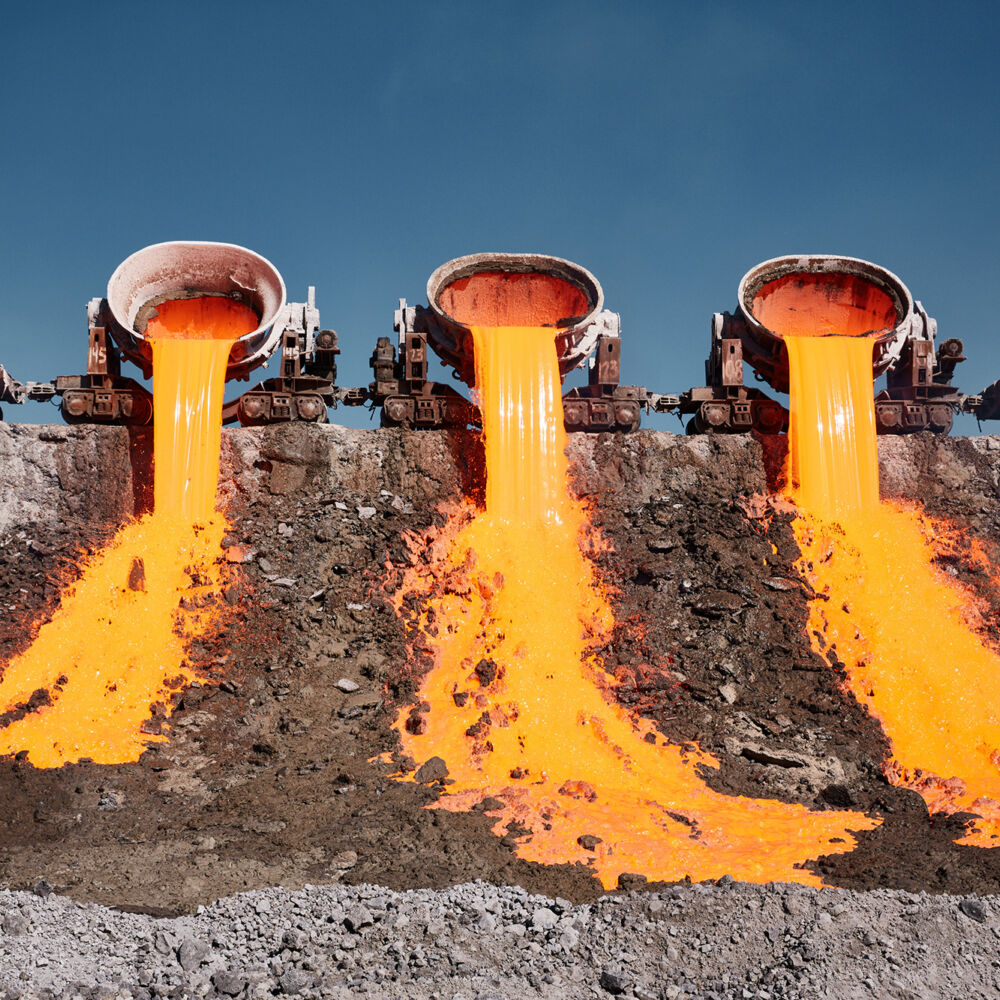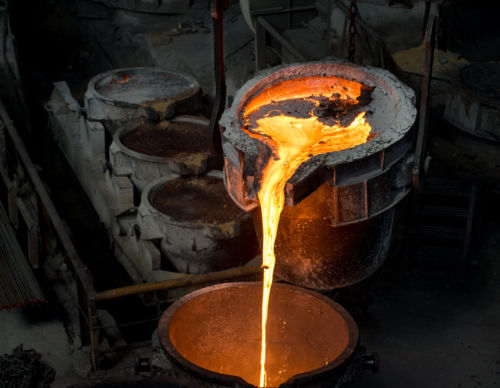Applications for Slags
Calculate the following based on your actual oxide chemistry:
Application Examples
Multicomponent Slag Phase Diagrams and Physical Properties
The important advantage of CALPHAD-type calculations is that slag phase diagrams and slag properties can be calculated for multicomponent industrial slag systems containing 10 or more elements over a wide range of composition, temperature, and oxygen partial pressure. Properties that can be calculated include solidus and liquidus temperatures, phases forming on solidification, MgO saturation for refractory wear prediction, sulfur and phosphorous capacity, electrical conductivity, electrical resistivity, and physical properties such as density, viscosity, and more. The results can be tabulated or plotted in many different ways.
In this example the CaO-rich side of the CaO-Al2O3-SiO2 (CAS) phase diagram is plotted at 1590 °C and air oxygen partial pressure. Liquid slag viscosities and fractions of liquid slag in the 2- and 3 phase regions are plotted as contour lines that are superimposed onto the phase diagram.

CaO-Al2O3-SiO2 phase diagram with fraction liquid and slag viscosities superimposed as contour lines.
Liquid Steel Composition in Equilibrium with a Slag Phase
The TCOX database not only contains solid oxide phases (refractory materials, non-metallic inclusions, and so on) and the oxide and sulfide liquid phase (often termed slag and matte phase respectively), but -very importantly- it also contains the full description of the metallic liquid phase, and also the most important solid metal phases, such as FCC_A1, BCC_A2 (austenite and ferrite, respectively) and a comprehensive collection of carbides. This means that full process metallurgical calculations involving metallic, non-metallic, and the gas phase can be performed using one single database.
In this example, the composition of 100t of liquid steel that is in equilibrium with about 3t of a CaO-rich slag phase at 1600 °C is plotted as a function of oxygen partial pressure. The important result is that the Phosphorous partitions to the slag phase at high oxygen partial pressures, whereas the Sulfur partitions to the slag at low oxygen partial pressures. This result has far reaching consequences in steelmaking and -refining and explains why it is extremely difficult to simultaneously desulfurize and dephosphorize steel and why the two are performed in separate processing steps.

Composition of 100t of liquid steel in equilibrium with a CaO-rich slag phase at 1600°C, showing desulfurization at low oxygen partial pressure and dephosphorization at high oxygen partial pressure.
Products Related to Slags
Learn more about Applications to Slags
A video tutorial demonstrating how to calculate a phase diagram for the oxide system Al2O3-MgO.
Simulating the Steelmaking and -Refining Process using Thermo-Calc’s Process Metallurgy Module
Accurate Viscosity Prediction for Molten Slags: A New Model and Database
Calculating Steel Making and Steel Refining Processes using Thermo-Calc’s New Process Metallurgy Module and the CALPHAD Database TCOX9
Improving Steel and Steelmaking—an Ionic Liquid Database for Alloy Process Design







